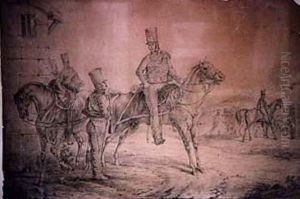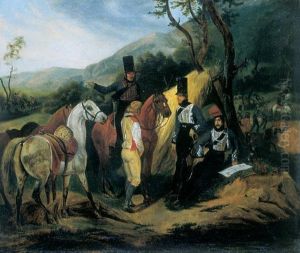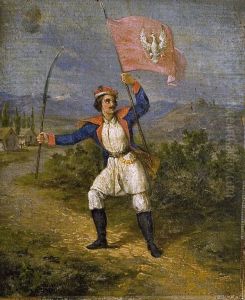Tadeusz Brodowski Paintings
Tadeusz Brodowski was a Polish painter, known for his contributions to the world of art in the 19th century, particularly within the realm of classical painting. Born on April 5, 1828, in Warsaw, Poland, Brodowski was raised in a time when Poland was under partition by its neighboring powers, which significantly influenced the cultural and political landscape of his homeland.
Brodowski's artistic journey began under the guidance of his father, Józef Brodowski, who was also a painter. This early exposure to the arts was crucial in shaping his future career. He furthered his studies at the Academy of Fine Arts in Warsaw, where he honed his skills and became deeply involved with the artistic community, exposing him to various styles and techniques.
Throughout his career, Brodowski specialized in historical and biblical scenes, often characterized by their vivid realism and attention to detail. He was heavily influenced by the classical tradition, yet his works also reflected the Romantic spirit of his time, which emphasized emotion and individualism. His paintings often contained a narrative quality, telling stories from Polish history or classical antiquity with a dramatic flair.
Brodowski was not only a painter but also an educator. He took on a role as a professor at his alma mater, the Academy of Fine Arts in Warsaw, where he was able to pass on his knowledge and passion for art to the next generation of Polish artists. His commitment to education and the development of the arts in Poland was a significant part of his legacy.
Sadly, Brodowski's life was cut short when he passed away on March 30, 1884, in Warsaw. He left behind a body of work that continues to be appreciated for its contribution to Polish art history. Brodowski's paintings can be found in various museums and galleries, where they serve as a testament to the skill and creativity of this notable 19th-century Polish artist.



